The Latest from Boing Boing |  |
- Six-year-old sent to reform school for bringing a "weapon" (Cub Scout camping cutlery) to school
- DIY: Fiber optic star field on your ceiling
- The woman who can't stop orgasming
- Kiel Johnson, cardboard sculptures of media machines
- My generation: How Indie Game Makers are Embracing Controlled Chaos
- Crop Art Is For Everyone!
- Big Things from Small Business - Which Inspires You?
- CC-friendly folk festival goes totally free
- Speaking on privacy at Hackney LibDems event, London, Oct 19
- Hallowe'en is safe
- Big Entertainment's century-long technophobic binge
- Mitch Horowitz: Goodbye, farewell, and Henry Wallace
| Six-year-old sent to reform school for bringing a "weapon" (Cub Scout camping cutlery) to school Posted: 12 Oct 2009 04:57 AM PDT Zachary Christie is a six-year old student in Newark, Delaware who is facing 45 days in reform school because he brought his new Cub Scout eating utensil to school for lunch. The utensil includes a knife, and this violates the school's
It's a Fork, It's a Spoon, It's a ... Weapon? (Thanks, Ron!) (Image: Case Boy Scouts of America Caramel Jigged Bone Hobo Knife 4-1/8", Knifecenter.com; illustration only, this is not necessarily the cutlery Zach Christie got in trouble for carrying) |
| DIY: Fiber optic star field on your ceiling Posted: 11 Oct 2009 10:32 PM PDT Over at Instructables, Mike Galloway posted a howto for creating a lovely, twinkling star field ceiling using fiber optics. Inspired by a star field ceiling he saw at a movie theater, Galloway decided to install one in his soon-to-be-born baby's room! "How to create a fiber optic starfield ceiling" |
| The woman who can't stop orgasming Posted: 12 Oct 2009 04:29 AM PDT The following true story was told to me by a woman who chooses to remain anonymous for privacy reasons. If you think you have Persistent Genital Arousal Disorder, you can visit this forum for help. I had my first orgasm at the age of 17. I was sitting at my desk at school when all of a sudden, I felt a warm, pulsing feeling in my genital area. My vagina flared up and I couldn't think straight. It was like someone had squeegeed my thoughts away. I was like, whoa, what's that? It felt really erotic and good, but I was also freaked out, scared, and confused. After that, it started happening a few times a day. I searched online for spontaneous orgasms, but all I found was weird porn. It kept getting worse. During my second semester of senior year, I counted orgasms on a sheet of paper. I was having 100 and 200 a day. I ran to hide in the bathroom between classes to relieve the pressure. By the time I started college, the orgasms became even more intense and disruptive, and I was having trouble concentrating. I became really depressed. I didn't know what was wrong with me, and I wasn't getting any better. I cried a lot. I hid in the bathroom. I became violently protective of my privacy. In the beginning, I told everyone I trusted about my condition. People said things like: "You're so lucky!" and "Dude, I'd love to date you." They didn't understand why I wanted it to go away, and labeled me a drama queen. The school psychiatrist thought I was crazy. After my sophomore year, I bought a bunch of vibrators and took medical leave.One day in 2003, a friend sent me an article in the Boston Globe about a newly discovered condition called Persistent Sexual Arousal Syndrome*. When I read it, I started crying hysterically--it described exactly what I was going through. I immediately made an appointment at the institute the article linked to, and after hours of tests, I was diagnosed with PSAS. My engorged genitalia and hypersensitivity made me a textbook case. Every other doctor had thought I was just a delusional hypochondriac. PSAS feels like having a second heartbeat. No, it's more than that. It's alive — it has its own life force, a mind of its own. I often wonder if this is how teenage boys feel about their erections. My parents pretend my PSAS doesn't exist. It makes me feel uncomfortable and rejected. My mother is very conservative — she has trouble saying the word "orgasm" out loud, and she thinks I'm a pervert because I have toys. A couple months ago, out of the blue, she said, "You still having that orgasm problem?" That was only the second time she asked about it since 2003. I sometimes wish I could make reference to it in normal conversations without feeling like a freak, but I understand that PSAS isn't exactly dinner conversation. Every time I do something, I have to evaluate my situation. Where am I? Are there other people around? How well do I know them? What is the likelihood that, if I don't get someplace private in time, things could get complicated? Can I make noise? (Being vocal isn't necessary, but it helps release more of the pressure.) I avoid triggers — things like music with heavy bass, vibrations from riding a train or an idle car, cold air, musky cologne, darkness, stress, scary movies, romantic movies, unexpected touch, a full bladder. PSAS is completely unrelated to sex drive. Watching sex scenes does nothing for me, but the other day, when a friend put his hand on my back, I found it really hard to contain a screaming orgasm. If my heart rate shoots up too high for too long, I flare up. I avoided exercise and gained a lot of weight. One time, I was hugging a male relative and I felt an orgasm arise. It felt really dirty and wrong, and I totally freaked out. Now, I try to avoid hugs in general unless I feel ready for them. I've been with my boyfriend for about six years, but we still haven't had sex. I don't know if I'll ever be ready to do it. Because of a vulvar pain disorder I have that sometimes comes with PSAS, I know it will hurt like hell. Others who have PSAS say that sex is not satisfying at all — the orgasms associated with sex are nothing compared to the ones induced by the condition. Sometimes I wish I could have sex with him because I think he deserves to have a 'real' girlfriend, but honestly, I just enjoy being held by him and not having it feel inappropriate. He's been very patient and understanding; he's my best friend, and we talk every night. I'm 24 now, and have learned to manage PSAS pretty well. I discovered dancing — it's a great alternative to jogging because it's not as cardio-intensive. As long I take breaks between routines, folk dancing or doing salsa doesn't cause a flare up. Last week, I was at the movies and had to leave twice because I was flaring up. Each time, I ran to the bathroom and tapped my heels on the floor to hear if there was anyone else around. Then I locked myself into a stall, braced myself against the stall door, and let the orgasm run its course. I missed about 15 minutes of the film, but that's just one of the many things that result from managing PSAS and its collateral damage. My orgasms feel like a cosmic joke. I don't know why this happened to me and not someone else. If I didn't have PSAS, I'd be much more outgoing, and I probably would have finished college two years earlier. I'd have a normal sex life. I feel like I'm lugging around a shadow, a ghost that I just can't shake. It depresses me that I'm stuck with it, probably for the rest of my life, but strangely enough, I don't want to be cured instantly of PSAS. It appeared suddenly in my life, and if it disappeared just as suddenly, I would always be looking over my shoulder, and I'm not sure I would know who I was. I would rather have it slowly fade away, but if it doesn't, well, I'm doing my best to make peace with this part of my life. *The name of this condition was recently changed to Persistent Genital Arousal Disorder to remove the stigma that this is a sexual disease. PGAD will be officially recognized in the next edition of the Diagnostic and Statistical Manual of Mental Disorders, which comes out in 2012. |
| Kiel Johnson, cardboard sculptures of media machines Posted: 11 Oct 2009 10:13 PM PDT Painter and sculptor Kiel Johnson created a gorgeous cardboard model of a twin-lens reflex camera. It actually functions as a pinhole camera. His next exhibition, opening October 17 at the Mark Moore Gallery in Santa Monica, CA, is dedicated to the printing press. The centerpiece of the show, titled "Publish or Perish," is a huge metal and cardboard of a printing press with a 70-yard drawing fed through it. For more, see the upcoming print issue of Hi-Fructose, Volume 14.  From Johnson's artist statement quoted on the Hi-Fructose blog: An interest in "the way things used to be" as well as the "way they might end up". I enjoy engineering and design features of the past. A time when objects were well crafted and meant to last for a generation or more, not just a season. I enjoy thinking about a time when your fancy new sewing machine came in a big pine crate and you needed a pry-bar to open it. Once opened, the machine had thousands of moving parts all cast in iron and aluminum, with levers, knobs and switches. You could see how it was built and if something broke down, you might even fix it yourself with a basic set of tools and some ingenuity.Publish or Perish: Kiel Johnson |
| My generation: How Indie Game Makers are Embracing Controlled Chaos Posted: 11 Oct 2009 11:03 PM PDT 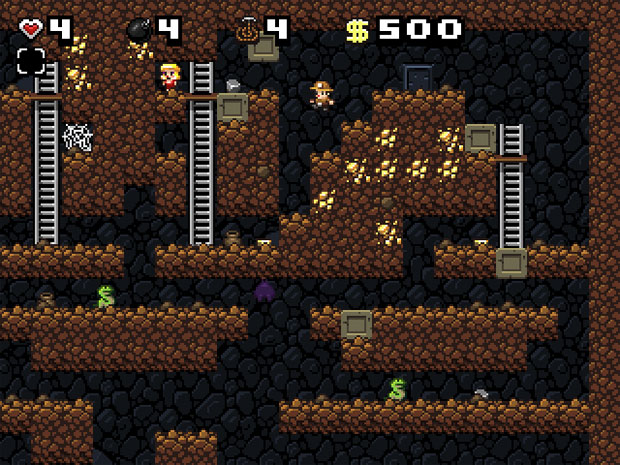 One of the highlights of this year's Austin GDC was a session by game design veteran Greg Costikyan on the 'blight or bane' of randomness in games -- a wide-ranging talk that covered the history and delicate balance of luck or chance in games, and their interplay with the idea of skill. Of particular note were his final slides on algorithmic content: randomly or procedurally generated games, starting, of course, with the genre-defining early computer RPG Rogue, a game highly dependent on luck but also one of near infinite variety with each successive playthrough. The idea is one that's been prevalent throughout videogame history, but it's also one that's most recently and notably being embraced by indies for its exploit-ability in adding 'cheap' (once your algorithms have been perfected) content and replayability on a tight budget and tiny team. Derek Yu's Spelunky (at top) is easily the best example, and where all discussion of the indie embrace of procedural generation needs to start. Taking the Rogue formula and applying it to the 8-bit platformer genre, Spelunky's enduring power and charm (having been finessed for nearly a year, and only just now hitting its 1.0 release) is its ability to create "situations" rather than rote level layouts. Though your only goal is 'simpy' to reach an exit at the bottom of each generated cave, without the benefit of memorization (think of how easily, 25 years later, you can now anticipate each impending Goomba and pitfall in World 1-1 of Super Mario Bros.) every new twist in Spelunky is a fresh test of more overarching skills: arrow-traps lining the walls of your next drop, a giant spider hovering near a precious gem, a distressed damsel crying for help at the bottom of a snake pit. None of these situations are ever presented the same way or in the same sequence twice, nor are their solutions any less unique, and each failure presents a learning opportunity that feels as rewarding as each victory (particularly in how it avoids the Groundhog Day frustrations of butting up against identical deaths). Play Yu's free PC release of the game and you'll understand instantly, and prep yourself for the 2010 release of the Xbox Live Arcade version. One of the highlights of this year's Austin GDC was a session by game design veteran Greg Costikyan on the 'blight or bane' of randomness in games -- a wide-ranging talk that covered the history and delicate balance of luck or chance in games, and their interplay with the idea of skill. Of particular note were his final slides on algorithmic content: randomly or procedurally generated games, starting, of course, with the genre-defining early computer RPG Rogue, a game highly dependent on luck but also one of near infinite variety with each successive playthrough. The idea is one that's been prevalent throughout videogame history, but it's also one that's most recently and notably being embraced by indies for its exploit-ability in adding 'cheap' (once your algorithms have been perfected) content and replayability on a tight budget and tiny team. Derek Yu's Spelunky (at top) is easily the best example, and where all discussion of the indie embrace of procedural generation needs to start. Taking the Rogue formula and applying it to the 8-bit platformer genre, Spelunky's enduring power and charm (having been finessed for nearly a year, and only just now hitting its 1.0 release) is its ability to create "situations" rather than rote level layouts. Though your only goal is 'simpy' to reach an exit at the bottom of each generated cave, without the benefit of memorization (think of how easily, 25 years later, you can now anticipate each impending Goomba and pitfall in World 1-1 of Super Mario Bros.) every new twist in Spelunky is a fresh test of more overarching skills: arrow-traps lining the walls of your next drop, a giant spider hovering near a precious gem, a distressed damsel crying for help at the bottom of a snake pit. None of these situations are ever presented the same way or in the same sequence twice, nor are their solutions any less unique, and each failure presents a learning opportunity that feels as rewarding as each victory (particularly in how it avoids the Groundhog Day frustrations of butting up against identical deaths). Play Yu's free PC release of the game and you'll understand instantly, and prep yourself for the 2010 release of the Xbox Live Arcade version. 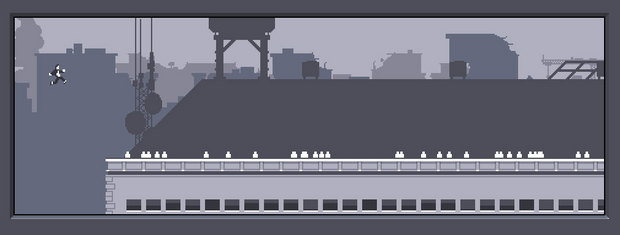 Adam Saltsman's embrace of these ideas goes even deeper: his decision not to include GUI level-editing utilities in his recent free Flixel Flash engine was meant to encourage new developers to experiment with script-based procedural techniques, starting with his own game Fathom (and Flixel demo game Mode). Where that's shined most brightly, though, is in his Experimental Gameplay contribution Canabalt (just recently released for the iPhone). Stripped down even further than Spelunky, Canabalt is one-button economy over-top procedural play. Your only interaction in Canabalt is to jump from roof to algorithmically-heightened and extended roof in a break-neck escape from a situation unspecified, giving the game a laser-focus on speed and reaction time. It's that simplicity and variety that's made it not only one of the most compulsive indie games of the year, but also the near-instant viral hit it's now become (alongside Saltsman's smart social network promotions). Adam Saltsman's embrace of these ideas goes even deeper: his decision not to include GUI level-editing utilities in his recent free Flixel Flash engine was meant to encourage new developers to experiment with script-based procedural techniques, starting with his own game Fathom (and Flixel demo game Mode). Where that's shined most brightly, though, is in his Experimental Gameplay contribution Canabalt (just recently released for the iPhone). Stripped down even further than Spelunky, Canabalt is one-button economy over-top procedural play. Your only interaction in Canabalt is to jump from roof to algorithmically-heightened and extended roof in a break-neck escape from a situation unspecified, giving the game a laser-focus on speed and reaction time. It's that simplicity and variety that's made it not only one of the most compulsive indie games of the year, but also the near-instant viral hit it's now become (alongside Saltsman's smart social network promotions). 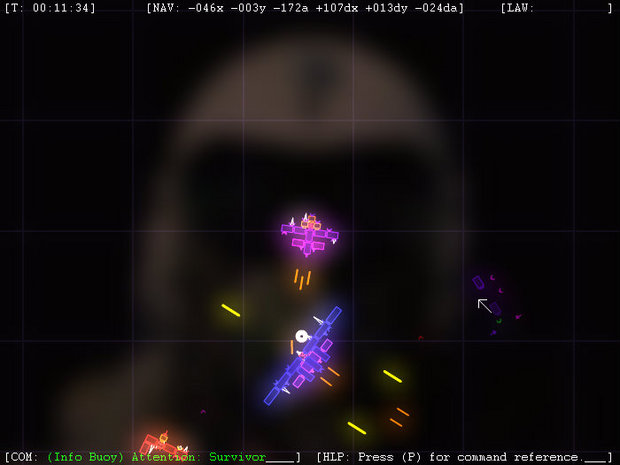 Finally, procedure meets sandbox in Farbs' Captain Forever, the least overtly or recognizably generated game of the three, but no less infinitely replayable, as signified by its title. Your goal in the game? Merely to act and excel as a star pilot -- and by 'you' I mean 'you': Forever's best fourth-wall-breaking trick is to use your PC's webcam to project your own face as a ghostly reflection on its low-bit display, visible primarily on direct-hit enemy explosions, which places you directly inside your ship's cockpit even as you sit slumped at your MacBook. To progress further into its infinite universe, Forever lets you procure scrap from demolished ships to build your own ever-more-fearsome craft, which elicits a further push-pull by generating both more powerful foes with higher-grade shields and weapons, and easier prey as you lose your own components in firefights. Still in pre-release, you can donate to Farbs to get an early look into the infinite space of his generated space, and, as with the other games above, become a firm believer in the church of procedural gaming. Finally, procedure meets sandbox in Farbs' Captain Forever, the least overtly or recognizably generated game of the three, but no less infinitely replayable, as signified by its title. Your goal in the game? Merely to act and excel as a star pilot -- and by 'you' I mean 'you': Forever's best fourth-wall-breaking trick is to use your PC's webcam to project your own face as a ghostly reflection on its low-bit display, visible primarily on direct-hit enemy explosions, which places you directly inside your ship's cockpit even as you sit slumped at your MacBook. To progress further into its infinite universe, Forever lets you procure scrap from demolished ships to build your own ever-more-fearsome craft, which elicits a further push-pull by generating both more powerful foes with higher-grade shields and weapons, and easier prey as you lose your own components in firefights. Still in pre-release, you can donate to Farbs to get an early look into the infinite space of his generated space, and, as with the other games above, become a firm believer in the church of procedural gaming. |
| Posted: 11 Oct 2009 10:40 PM PDT  See, it says so right there on the sign. Crop art is exactly what it sounds like: Art made with crops. Generally speaking, that means everything from crop circles to grape-vine wreaths. But we're talking about a very specific kind of crop art. One seldom seen outside the surreal confines of the Minnesota State Fair. This crop art is all about seeds--thousands of them--glued together to form an image. Right now, you're thinking about preschool macaroni pictures, aren't you? Don't. Real crop art is much more challenging.  Everything you see here is seeds. Artists like Kimberly Cope--the Minneapolitan responsible for this punny little number, which references the grand Fair tradition of serving anything and everything fried and on a stick--painstakingly glue the seeds to a masonite backer board. It's an artistic technique that stems from historical attempts to display crops for show. You wanted something aesthetically pleasing, but you also wanted to show off the quality of the crops themselves. "It's telling that these pieces are displayed in the horticulture building, alongside the blue-ribbon corn and flax," says Colleen Sheehy, director of the Plains Art Museum and the author of Seed Queen, a book about crop art and the woman who revolutionized the medium.  These are all the different types of seeds that make up Conan. You see the teeny canola seeds and quinoa? You put those on individually with a toothpick, Sheehan says. Unsurprisingly, that kind of work doesn't have particularly widespread appeal. When Sheehan was researching a book about Lillian Colton--the mother of modern Minnesota crop art--she contacted every state fair in the U.S., looking for similar competitions. Nobody had one. "You will see some crop art in other states, mixed into a different category, like in arts and crafts," she says. "But Minnesota is really the only place where this isn't just nostalgic and cute. It's still a live art here. It's still evolving." (Ms. Cope, by the way, deserves some sort of award for most puns shoehorned into a State Fair art entry.)  Lillian Colton deserves the credit for keeping crop art alive in Minnesota. This Abe Lincoln--again, all seeds, including the background--is one of hers. Colton first entered the crop art competition in 1966, the second year of its existence as a special category. Back then, Sheehy says, people were using the seeds like stitches of thread. You'd have a big, blank background with seeds forming some abstract shapes or mimicking old-fashioned embroidery samplers. Colton (truly, a Happy Mutant before her time) went in an entirely different direction. At the 1967 fair, she unveiled her first portrait, using seeds like drops of paint to create texture, depth and shadow. "She really blew it open by showing you could do any subject matter," Sheehy says. "And the virtuosity she introduced by using the really tiny seeds, it raised the bar with obsessive quality in the art."  Colton, as the kids say, brought it. She entered a new portrait every year, and it eventually got to the point where the judges may as well have printed her name on the blue ribbons in advance. Thus, did the backlash begin. It started with subject matter. Colton's portraits, innovative as they were, were very Lawrence Welk, culturally speaking. You got your presidents. You got your un-controversial movie stars. You got your Jesus. In response, younger Minnesotans started turning up with portraits of Bob Marley and Che.  Which leads us to this snappy little number from the 2009 Fair. One of the first reasons I got curious about Minnesota crop art was its tradition of political commentary, often featuring a strong lefty bent--a somewhat unexpected tendency for a state fair art competition involving commodity crops. It's quite a bit different from Lillian Colton's polite portraiture, but Sheehy says the credit goes to Colton all the same. "Even to those who reacted against her, she was really the standard people measured themselves against. Good and bad she sent crop art in a lot of different directions and made it seem alive and viable," Sheehy says. "What you see here today is more interesting, artistically, than anything over in the fine art building."  For the record, the liberal bias of modern crop artists does attract its own dissent. No, I'm not sure why Nancy Reagan has a parrot. Or why Barbara Bush was left out.  And the competition isn't all about politics.  The competitors also aren't all Minnesotan. There is a category for would-be seed kings and queens who live out of state. The most out-of-state of all the out-of-staters, according to the St. Paul Pioneer Press, is Zambian artist Obrien Shipeka. Shipeka has long worked with seed art and entered this portrait of his little sister after a U.S. Embassy public affairs officer told him about the Minnesota State Fair. Unique to Shipeka's work is the technique of roasting seeds--in this case, millet--to alter their color. The innovation helped earn him the 2009 overall Best in Show, the out-of-state blue ribbon and a $40 prize. To put the prize in perspective, Shipeka just made about as much as a Zambian security guard could expect to earn in a year, according to the 2002 Economic and Social Development Research Project of the Jesuit Centre for Theological Reflection. Previously: |
| Big Things from Small Business - Which Inspires You? Posted: 11 Oct 2009 11:08 PM PDT
It's down to the wire with three finalists vying for the winning nod. And who provides that winning nod? You do! Your votes will determine which of these three hard working small businesses will receive $100,000 in grant and marketing support from American Express. Read through the inspiring stories of these three finalists - a telecommunications company, a paint and hardware store and an organic baby food company - and cast your vote for the most inspiring story. It means a lot and can make a real difference to one inspirational small business. |
| CC-friendly folk festival goes totally free Posted: 12 Oct 2009 02:50 AM PDT Open source banjo maven Patrick Costello writes,
The Crisfield Folk Musicians Retreat 2010
(Attentive readers will remember that Patrick had been legally and painfully deaf for some time, and recently had corrective surgery via a BAHA implant; he adds, "My Baha implant is amazing. I can hear! For the past month I have been wandering around like a little kid listening to birds and crickets. Most of all I can hear my instruments again. It has been so wonderful being able to just kick back with my guitar and play without struggling to make out the sounds or having to hunch over and rest my teeth on the upper bout. My father caught the activation of the device on video. I have a hard time watching the bit where I hear my guitar for the first time in years. Technology is just grand!) Previously: |
| Speaking on privacy at Hackney LibDems event, London, Oct 19 Posted: 10 Oct 2009 10:31 PM PDT I'm speaking at a Hoxton LibDems dinner in London on Oct 19 at 7:30PM, at the Hoxton Apprentice in Hoxton Square, near Old Street Station. The event is open to the public -- though they will try to get you to join/donate to the LibDems, whom I support for many reasons, not least because they're a national party who don't expect me to carry a biometric radio-enabled ID card as a condition of my spousal visa. Not surprisingly, I'll be talking on "Privacy, Civil Liberties and Technology - Is Privacy Possible in the 21st Century?" Date: Monday, October 19, 2009Hackney Lib Dems autumn dinner in Hoxton Square near Old Street tube, with special guest speaker Cory Doctorow |
| Posted: 11 Oct 2009 10:05 PM PDT On the news that Bobtown, Pennsylvania has outlawed Hallowe'en to "keep kids safe," Lenore "Free Range Kids" Skenazy points out that there has never been a single substantiated incident of a kid being sickened, hurt or killed by doctored candy handed out during trick-or-treating in the history of America. Ever.
Goodbye Halloween, Hello "Safety" (Image: Me as a pirate, Hallowe'en 1975, Toronto, Canada -- photo by Gordon Doctorow) Previously:
|
| Big Entertainment's century-long technophobic binge Posted: 11 Oct 2009 09:53 PM PDT Nice work from Ars Technica's Nate Anderson on the ways that entertainment companies have spent the past century decrying new technology, claiming that it would destroy copyright, from the record player to the xerox machine to the VCR to DTV to Napster. 100 years of Big Content fearing technology--in its own words |
| Mitch Horowitz: Goodbye, farewell, and Henry Wallace Posted: 11 Oct 2009 02:51 PM PDT Boing Boing guestblogger Mitch Horowitz is author of Occult America: The Secret History of How Mysticism Shaped Our Nation and editor-in-chief of Tarcher/Penguin publishers. Friends, It has been a pleasure to be a part of the Boing Boing nation as a guest blogger these past two weeks. I hope to stay in contact online and to meet some of you at various gigs around the country, including at the Esalen Institute, where Erik Davis and I will be delivering a weekend workshop on February 19-21 titled "The Occult in America: An Adventure in Arcane History." You can also see me next Friday at 9 p.m. EST on a Dateline NBC special about Dan Brown's The Lost Symbol.While I was writing Occult America, the figure I came to most admire was Henry A. Wallace (1888-1965), Franklin Roosevelt's secretary of agriculture and second vice president. Wallace was not only a successful businessman (founder of Pioneer Hi-Bred) and an innovative politician (his policies saved thousands of family farms during the Great Depression), but he was also a genuine searcher into cosmic realms, freely exploring Theosophy, Tibetan Buddhism, astrology, Native American shamanism, and various strands of mysticism. His name may be largely forgotten, but he was a model of how to live with purpose. I wish you farewell with two of Wallace's statements: Selected Works of Henry A. Wallace Henry A. Wallace Country Life Center |
| You are subscribed to email updates from Boing Boing To stop receiving these emails, you may unsubscribe now. | Email delivery powered by Google |
| Google Inc., 20 West Kinzie, Chicago IL USA 60610 | |

 Critics contend that zero-tolerance policies like those in the Christina district have led to sharp increases in suspensions and expulsions, often putting children on the streets or in other places where their behavior only worsens, and that the policies undermine the ability of school officials to use common sense in handling minor infractions.
Critics contend that zero-tolerance policies like those in the Christina district have led to sharp increases in suspensions and expulsions, often putting children on the streets or in other places where their behavior only worsens, and that the policies undermine the ability of school officials to use common sense in handling minor infractions. 


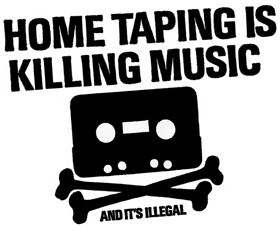
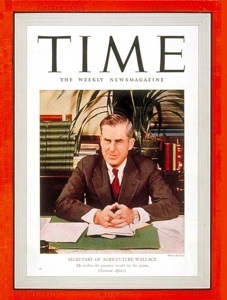 Religion is a method whereby man reaches out toward God in an effort to find the spiritual power to express here on earth in a practical way the divine potentialities in himself and his fellow beings.
Religion is a method whereby man reaches out toward God in an effort to find the spiritual power to express here on earth in a practical way the divine potentialities in himself and his fellow beings.
No comments:
Post a Comment